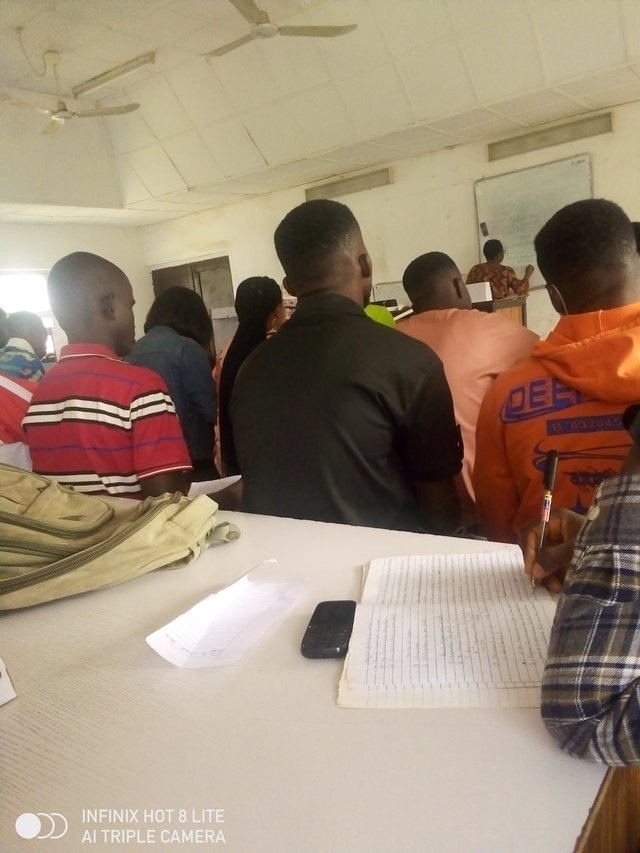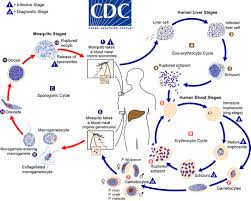
INTRODUCTION
Hello everyone and welcome to my blog. I have been quite busy lately with school and presentation. I was happy entering my final year but it's demanding and stressful. Last week I was opportuned to lead my group in a departmental presentation and came out the best.
This week I was elected by group to make this week's presentation. Our presentation is all about malaria. Thanks s research took me about 3days and I noticed it's something that actually affects everyone. Please read through and also take good care of your health.
MALARIA
Malaria is a mosquito-borne disease caused by a parasite. People with malaria often experience fever, chills, and flu-like illness. Left untreated, they may develop severe complications and die. In 2020 an estimated 241 million cases of malaria occurred worldwide and 627,000 people died, mostly children in sub-Saharan Africa.
About 2,000 cases of malaria are diagnosed in the United States each year. The vast majority of cases in the United States are in travelers and immigrants returning from countries where malaria transmission occurs, many from sub-Saharan Africa and South Asia.
MORPHOLOGY
Plasmodium spp. [these species cause malaria in humans] Parasite morphology: Malarial parasites form four developmental stages in humans(hepatic schizonts and then intraerythrocytic trophozoites, schizonts and gamonts) and three developmental stages in mosquitoes (ookinetes, oocysts and sporozoites).
LIFECYCLE
The natural history of malaria involves cyclical infection of humans and female Anophelesmosquitoes. In humans, the parasites grow and multiply first in the liver cells and then in the red cells of the blood. In the blood, successive broods of parasites grow inside the red cells and destroy them, releasing daughter parasites (“merozoites”) that continue the cycle by invading other red cells.
The blood stage parasites are those that cause the symptoms of malaria. When certain forms of blood stage parasites (gametocytes, which occur in male and female forms) are ingested during blood feeding by a female ANOPHELES MOSQUITO, they mate in the gut of the mosquito and begin a cycle of growth and multiplication in the mosquito.
After 10-18 days, a form of the parasite called a sporozoite migrates to the mosquito’s salivary glands. When the Anophelesmosquito takes a blood meal on another human, anticoagulant saliva is injected together with the sporozoites, which migrate to the liver, thereby beginning a new cycle.
Thus the infected mosquito carries the disease from one human to another (acting as a “vector”), while infected humans transmit the parasite to the mosquito, In contrast to the human host, the mosquito vector does not suffer from the presence of the parasites.
The malaria parasite life cycle involves two hosts. During a blood meal, a malaria-infected female Anopheles mosquito inoculates sporozoites into the human host . Sporozoites infect liver cells and mature into schizonts , which rupture and release merozoites . (Of note, in P. vivaxand P. ovale a dormant stage [hypnozoites] can persist in the liver (if untreated) and cause relapses by invading the bloodstream weeks, or even years later.) After this initial replication in the liver (exo-erythrocytic schizogony ), the parasites undergo asexual multiplication in the erythrocytes (erythrocytic schizogony ).
Merozoites infect red blood cells . The ring stage trophozoites mature into schizonts, which rupture releasing merozoites . Some parasites differentiate into sexual erythrocytic stages (gametocytes) . Blood stage parasites are responsible for the clinical manifestations of the disease. The gametocytes, male (microgametocytes) and female (macrogametocytes), are ingested by an Anopheles mosquito during a blood meal . The parasites’ multiplication in the mosquito is known as the sporogonic cycle . While in the mosquito’s stomach, the microgametes penetrate the macrogametes generating zygotes . The zygotes in turn become motile and elongated (ookinetes) which invade the midgut wall of the mosquito where they develop into oocysts . The oocysts grow, rupture, and release sporozoites, which make their way to the mosquito’s salivary glands. Inoculation of the sporozoites into a new human host perpetuates the malaria life cycle.
EPIDEMIOLOGY
Malaria is transmitted via the bite of a female Anopheles spp mosquito, which occurs mainly between dusk and dawn. Other comparatively rare mechanisms for transmission include congenitally acquired disease, blood transfusion, sharing of contaminated needles, organ transplantation, and nosocomial transmission
PATHOGENESIS
Malarial infection begins when a person is bitten by an infected female anopheles mosquito and Plasmodium spp (species) parasites in the form of sporozoites are injected into the bloodstream. The sporozoites travel to the liver, multiplying asexually over the next 7–10 days. During this time there are no symptoms.
Diagnosis
Malaria involves microscopy with visualization of Giemsa-stained parasites in a blood sample. Species determination is made based on morphological characteristics of the four species of human malaria parasites and the infected red blood cells.
TREATMENT
Treatment consists of anti-parasitics; The most common antimalarial drugs include: Chloroquine phosphate. Chloroquine is the preferred treatment for any parasite that is sensitive to the drug. But in many parts of the world, parasites are resistant to chloroquine, and the drug is no longer an effective treatment.
Generic name: mefloquine systemic Drug class: antimalarial quinolines For consumers.
TRANSMISSION
Usually, people get malaria by being bitten by an infective female Anophelesmosquito. Only Anopheles mosquitoes can transmit malaria and they must have been infected through a previous blood meal taken from an infected person. When a mosquito bites an infected person, a small amount of blood is taken in which contains microscopic malaria parasites.
About 1 week later, when the mosquito takes its next blood meal, these parasites mix with the mosquito’s saliva and are injected into the person being bitten.
Because the malaria parasite is found in red blood cells of an infected person, malaria can also be transmitted through blood transfusion, organ transplant, or the shared use of needles or syringes contaminated with blood. Malaria may also be transmitted from a mother to her unborn infant before or during delivery (“congenital” malaria).
PREVENTION
Malaria can often be avoided using the following processes;
Awareness of risk – find out whether you're at risk of getting malaria.
Bite prevention – avoid mosquito bites by using insect repellent, covering your arms and legs, and using a mosquito net.
Check whether you need to take malaria prevention tablets – if you do, make sure you take the right antimalarial tablets at the right dose, and finish the course.
Diagnosis – seek immediate medical advice if you have , including up to a year after you return from travelling.

I converted 6.100sbd and powered up 75.934steem.
Thanks
Cc;
@focusnow
@ngoenyi
@samuel20
@peterabagi

You are very intelligent dear great post
Downvoting a post can decrease pending rewards and make it less visible. Common reasons:
Submit